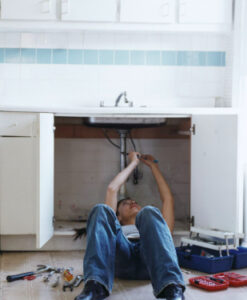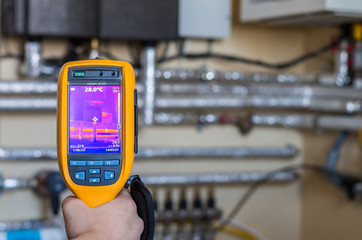The plumbing system is vital for the everyday functioning of a home. But, if it gets damaged, it can be costly. Leaks that go unrepaired can cause stains, promote mold growth, and lead to musty odors. You can protect your pipes by regularly checking for leaks and following preventative maintenance tips from https://www.plumbing-express.com/. In addition, homeowners insurance typically covers additional living expenses (ALE) for water damage.
A leaking pipe may seem harmless initially but can lead to much damage in the long run. Untreated leaks can ruin flooring, ceilings, and other home fixtures. They also create an ideal environment for mold and mildew to grow, which can cause respiratory problems. Furthermore, the extra moisture in the air can promote wood rot and attract pests such as bugs and rodents. In the long run, unaddressed leaks can result in water damage that is difficult to repair and can even depreciate the value of your property.
Age and wear and tear are the most common cause of a leaky pipe. However, there are some other things that can cause leaks as well. Shifts in the ground due to earthquakes, erosion or tree roots can cause your pipes to shift and crack, creating hard-to-reach leaks. Also, a leaky pipe caused by corrosion can occur in the connections between your pipes or at the joints.
If you suspect that you have a leaking pipe, you should start by shutting off the water supply to your house. You can do this by turning off the water main valve, usually located in an area such as your garage, basement or crawl space. After that, flush all the toilets in your house and open up the faucets to drain the remaining water from the system.
Next, find where the leak is coming from. Dry off the area using a towel and use tissue paper to blot it to determine which direction the water is leaking from. If you cannot locate the source, consider hiring a plumber to use infrared thermography to track down the leak. Once you know where the leak is, you can use a rubber patch kit to stop the flow of water at the site of the leak.
For a more permanent fix, you should replace the damaged section of the pipe. You can buy a slip coupling that is the same size and type as your existing pipe to make this easy. If you do not want to replace the pipe, you can use a clamp or a piece of flexible tubing to connect the two ends of the pipe. You should also apply epoxy putty to the leaky spot to ensure a secure and waterproof connection.
Damaged Fixtures
The plumbing fixtures in your home undergo a lot of wear and tear. They have to deal with the constant flow of water and often experience frequent temperature changes. This makes them prone to leaking and damage. You should regularly check your fixtures for leaks and other signs of problems. It’s a good idea to set reminders in your phone or calendar to do so. You’ll save yourself a lot of headaches if you catch a problem before it gets out of hand.
Leaking pipes and fixtures increase your water bills and waste a lot of water. They also cause significant damage to your home. What may seem like a small puddle of water can lift floorboards, warp wood, and peel paint over time. Leaving these issues untreated will lead to mold growth, rotting wood, and foundation damage. It’s a good idea to trust the experts at St Paul Pipeworks when it comes to fixing your plumbing fixtures.
Putting off repairs will only increase your costs. The water damage cleanup cost will be much more expensive than if you have the problem fixed as soon as possible. A quick fix by a plumber is usually cheaper than a full replacement of the fixture. Besides, the plumber will probably have the necessary parts on his truck and can finish the job in one visit. This will save you a lot of money in the long run.
Flooding
While a pipe burst is a common cause of flooding in homes, not every home is affected by such an event. Flooding can also occur from a number of other reasons, including poor drainage and clogged drains. If your home is experiencing flood water damage, it’s important to act quickly before the issue worsens.
Heavy rains create a lot of pressure on the ground around your house, which can shift or crush pipes underneath it. The extra weight can also push down on pipes, which can make them crack and break.
Flood water can also contaminate the soil and any household items it comes into contact with, such as furniture, papers, carpets and walls. This can lead to the growth of mold and other bacteria, which is not only damaging to your property but can be hazardous to your health.
Poor Drainage
If your home has poor drainage, it can lead to flooding in your basement and other parts of your house. This is especially true if you have a sewer backup, as the sewage will seep back into your house and damage your plumbing systems and fixtures.
To avoid these problems, make sure that your home has good drainage and that you regularly clean out your drains. You can use a snake or drain cleaner to remove any obstructions from your drains. It’s also important to know where your home’s water shut off valve is located in case of an emergency.
Sewer Clogs
If you have a blockage in your sewage line, it can lead to a sewage backup that will ruin any fabrics and furniture in your home. This is one of the most severe types of plumbing damage, as sewage is full of dangerous bacteria that can make you sick.
To avoid this type of problem, it’s a good idea to have your sewer line checked regularly by a professional plumber. You can also reduce the chances of a clog by using biodegradable products to clean your drains and avoiding chemical-based drain cleaners. These chemicals are often toxic to your pipes, and they can cause them to corrode and break down.
Tree Roots
Tree roots are often out of sight and out of mind, but they play an important role in a tree’s health and stability. They anchor the tree in place and provide a water and mineral transport system. There are two types of underground roots: woody structural roots that anchor a tree and non-woody feeder roots that feed into the woody roots. Most of the root system is located in the top 8 to 12 inches of soil, but some may grow deeper than that.
Trees create more than they need, so they store extra materials in their roots, trunks and branches. This helps them survive when conditions are less than ideal. If a tree is under stress due to drought, disease or pests, it can draw on its reserves to survive until the conditions improve. Trees’ roots also take up the chemical compounds produced by the leaf cells through a process called photosynthesis. The roots then send these chemicals through tubes (called xylem and phloem) to the rest of the plant.
When a tree is damaged or dies, the roots may die as well. This causes a loss of support, and the structure of the crown can weaken. It is important to protect the roots as much as possible.
In general, it is best to plant trees with deep, loose soil that will allow the roots to grow freely. Adding organic material to the soil can also help encourage healthy roots. It is also a good idea to avoid trenching, construction or planting too close to a tree’s roots. Doing so can disturb the roots and cause damage.
Most roots form in a circular area around the drip line (the edge of the tree canopy). These roots can be 4 to 7 times larger than the size of the trunk at the base of the trunk. The roots of some trees, such as oaks and pines, have a more straight, trunk-like structure and develop taproots that are anchored in the ground. However, most trees do not have taproots and their roots develop in a more complex pattern.

